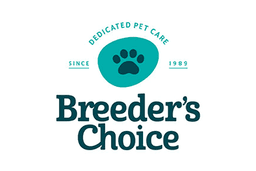As spring blossoms, so does the activity of many parasites that can affect our beloved dogs. As a responsible pet owner, it's essential to know about these pests, the risks they present, and the treatments available.
Table of Contents
Fleas
What are they?
Fleas are tiny, wingless insects that thrive by feeding on the blood of our pets. With their incredible jumping abilities, they're experts at hitching a ride on any unsuspecting dog and setting up camp.
Where are they found?
-
East Coast (QLD, NSW, VIC, ACT): Fleas are most active during the warm spring and summer months. Coastal and humid areas, such as those in NSW, see a heightened prevalence, while regions with moderate rainfall, like parts of Victoria, also experience peaks.
-
West Coast (WA): Fleas can be problematic year-round in certain areas, but especially so during spring and early summer, with coastal regions being more affected.
-
Southern Area (SA, TAS): Spring and early summer witness a surge in flea populations. Tasmania, due to its cooler climate, experiences peaks mainly during these warmer months. South Australia's varied climate can lead to regional differences in flea activity.
-
Northern Territory: The tropical climate means fleas can be active year-round, particularly in high humidity regions.
Symptoms and treatment
Fleas can turn your pet's peaceful day into a scratching marathon. Symptoms include excessive scratching, red spots on the skin, and perhaps even witnessing the tiny culprits hopping on your dog's coat. Thankfully, numerous treatments are available, from oral medications and topical solutions to sprays and collars. Remember, keeping your environment clean is as crucial as treating your pet. Regular vacuuming and washing pet bedding can help ensure these pests don’t come back for an encore.
Worms
What are they?
Worms are the uninvited tenants living inside various parts of your dog's body – rent-free! While some, like tapeworms, roundworms, and hookworms, prefer the cozy confines of the intestines, others, like heartworms, prefer the heart and blood vessels. These parasites can range from just being a nuisance to posing serious health threats to our beloved pups.
Where are they found?
- East Coast (QLD, NSW, VIC, ACT): Warm and humid conditions create a year-round worm risk, especially from heartworm-carrying mosquitoes. Risk peaks in spring and summer, particularly in coastal and rainy regions.
- West Coast (WA): Coastal and rainy areas face increased worm activity in spring and early summer.
- Southern Area (SA, TAS): Spring and summer are peak worm activity seasons, influenced by each region's microclimate.
- Northern Territory: The tropical climate poses a consistent year-round risk, with heartworm from mosquitoes being a significant concern.
Symptoms and treatment
If your dog loses weight, has a swollen belly, or shows spaghetti-like strands in their stool, they may have worms. Other signs include coughing (indicating heartworms) and visible rice-like segments near their rear (tapeworms). Fortunately, there are various treatments, from oral meds to spot-on applications. Maintain routine preventative care and always clean up after your pet to avoid spreading these parasites.
Ticks
What are they?
Ticks are the miniature vampires of the insect world. These arachnids latch onto your dog (and sometimes you!) to feed on blood. But it's not just the bite that's a bother; ticks can transmit diseases like Lyme disease and Australian paralysis tick encephalitis.
Where are they found?
Paralysis Ticks:
- Prevalent in coastal areas of Queensland and northern New South Wales.
- Less common in Victoria, Western Australia, and almost negligible in South Australia, Tasmania, Northern Territory, and ACT.
Brown Dog Ticks:
- Found mainly in Victoria and are common year-round in the Northern Territory.
Bush Ticks:
- Encountered in wooded and coastal regions of Victoria and South Australia during spring and summer. Tasmania also sees a range during warmer months.
While some areas may have low reported incidences of certain tick species, it's essential to remember that the risk is never zero. Regular checks and preventative measures are always recommended no matter where you reside.
Symptoms and treatment
Signs include a visible tick on the skin, itching, and sometimes swelling. Quick removal is crucial, and preventive treatments can be very effective.
Choosing the Right Treatment
Your dog's eager to play outside, but ticks, fleas, and worms are a concern. Don't fret! Picking the right treatment can be simpler than you think. Consider the following:
-
Age Matters: Always check the age recommendation. Some products are puppy-friendly, while others are tailored for older dogs.
-
Location: Live in a tick-prone area like Queensland's coast? Opt for robust tick protection. For worm hotspots, go broad-spectrum.
-
Food Fuss: If your dog's selective about treats or has food sensitivities, ensure no dietary conflicts with the medicine. Picky eaters? A topical solution might be less hassle.
-
Perfect Fit: Always choose a treatment that matches your dog's weight.
-
Commitment Level: Some treatments are monthly; others last longer. Know your schedule and select accordingly.
Tablet or Topical
Wondering whether to choose a tablet or a topical solution? Let's break it down swiftly.
Tablets/Chewables:
Pros:
- Complete protection from the inside out.
- Precise and consistent dosage.
- Some formulations offer extended protection.
- No risk of environmental contamination.
- Convenient for dogs with thick coats.
Cons:
- Some dogs might dislike the taste.
- Ensuring full consumption can be tricky.
- Potential for the dog to vomit the tablet, requiring supervision post-administration.
Topical Treatments:
Pros:
- Ideal for pill-averse dogs.
- Direct skin application for localised effect.
Cons:
- Can leave a wet patch on fur.
- Must keep the dog dry for some time post-application.
- Ineffective if not properly applied to the skin; easy to mistakenly apply to fur.
Dog Flea, Tick and Worm Product Comparison Table
We aim to provide accurate information, but product details can change. Always check the product's label and consult your veterinarian to ensure the best parasite prevention for your dog.





























